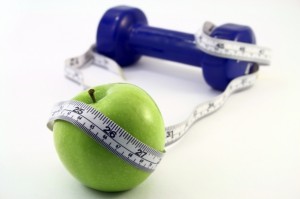Updates in Women’s Cardiovascular Disease
Heart disease is the leading cause of death in the U.S. The World Health Organization estimates that 17.5 million people died of cardiovascular disease (CVD) in 2005, representing 30% of all global deaths. Of these, 7.6 million were due to coronary heart disease and 5.7 million were due to stroke. It is also a major cause of disability. The risk of heart disease increases as the population ages. A man older than age 45 or a woman older than 55 has a greater risk of heart disease than a younger person. Another known risk factor is having a close family member who had heart disease at an early age.
Trial Results for Women
Heart disease kills six times more women than breast cancer (American Heart Association, 2005), but according to a 1997 national survey, only 30% of women recognized CVD as a leading cause of death. The Red Dress Campaign, kicked off in 2005, raised this awareness to 55%, although disproportionately more of this increased awareness was in white or well-educated women.
Until Bernadette Healy, MD became medical director of the National Institutes of Health (NIH) in 1990, most clinical trials studying heart disease did not include female subjects. Thanks to her, we are now approaching nearly 20 years of clinical trials with women. Patterns are emerging, such as:
1) Women tend to develop cardiovascular disease 10-15 years later than men; possibly estrogen is protective, although this is controversial. By age 60, a woman’s risk for CVD equals a man’s risk. Certainly, ingesting hormones increases clotting risk for some women. On the other hand, smoking lowers estrogen levels and this is thought by some to play a role in why women smokers are more at risk for CVD than comparable male smoking cohorts.
2) In general, women are more vulnerable to toxins. Does anyone have multiple chemical sensitivity (MCS) patients? The preponderance are women; our lungs, livers and hearts are smaller.
3) Women’s smaller hearts beat faster, even when asleep. Women have different CVD risk factors and manifestation patterns than men. For example, women are more likely to have MIs not preceded by angina (Canto et al., 2000). Women are more likely than men to die from their first heart attack. Prevention, therefore, is particularly urgent for women.
4) Women are less likely to develop atherosclerosis, and are likely to have lower blood pressure. Thus, the cholesterol issue is less pertinent for women and the number 200 probably should not be applied to women. More than half of women presenting with their first heart attack have “normal” cholesterol levels (Burke et al., 1998). A younger woman with high cholesterol may be more at risk for CVD. However, after age 65, low cholesterol confers increased mortality risk for all diseases, including CVD.
5) Daily aspirin has been definitively proven to not prevent the first MI in women, which it may in men, though it can also kill men from provoking bleeding gastric ulcers. So unless a female patient has already had a stroke, clot or MI, aspirin is unlikely to help prevent these killer diseases. Watch for women patients unnecessarily taking a “baby aspirin a day,” because some physicians still are not up to speed with this concept (Ridker et al., 2005).
6) Conventional “risk factors” affect men and women differently. For example, high total cholesterol-to-HDL ratio is more likely to mean atherosclerosis in men. Women are significantly less likely to build up plaque; they are more likely to have peripheral artery – as opposed to coronary artery – disease.
7) Also, the impact of alcohol consumption is worse in women: Alcohol is metabolized more quickly by women, making the immediate impact on heart, brain and liver more severe. Men have a higher water-to-fat ratio in their body composition, and this extra water helps men to dilute the effect of alcohol. Further, women are more likely than men to binge drink, which is the most dangerous way to consume this pickling poison.
Encouraging Cardiovascular Wellness
From a whole body, naturopathic perspective, we can think of cardiovascular wellness as having both the plumbing and the electricity working well. In women, the vasculature is less likely to get jammed up with plaque in the coronary vessels than men. More often, women suffer from peripheral artery disease due to vasospasm and low mineral status. Not infrequently, patients are chronically dehydrated, and this contributes to preferential distribution of available fluids to the major vessels, at the expense of the periphery. Plaque (comprised of cholesterol, calcium and bacteria) only adheres to damaged intima, which is why bioflavonoids and avoidance of lipid peroxidation are keys to maintaining healthy arterial walls. We all have seen patients with marginally elevated cholesterol on a statin drug. Suspect statin side effects with any complaints of muscle fatigue, muscle weakness or muscle cramping. Statins also may adversely affect the electrical system of the heart.
Women are more likely to have mitral valve prolapse than their male counterparts. Sometimes this problem is readily “fixed” with adequate magnesium intake; rarely, surgical repair or replacement of the valve is required. Magnesium supplementation and caffeine elimination will also help mild arrhythmias, although I recommend electrocautery of ectopic electrical tissue for pronounced tachycardias, such as PSVT and some atrial fibrillation syndromes. A pacemaker is generally implanted for chronic and profound bradycardic episodes, and not infrequently directly after the first episode, especially in an elderly patient where the concern is syncope. You may be able to help your patient avoid a pacemaker by evaluating B vitamin absorption (homocysteine level) and providing nerve nutrients such as lecithin, omega 3 oils, Hypericum, Convallaria and Selenecereus.
Hypertension (140/90mmHg or more) is possibly the most dangerous of the CVD risk factors, and one of the most difficult to resolve. It remains a problem of “Westernized” societies, and is rarely found in rural, agricultural or less-developed communities. Smoking tobacco significantly increases the risk for high blood pressure. Please help patients to quit. If you have a patient that still smokes, yet continues to seek your services, they are “asking” for help quitting (even though they may deny that!). Refer patients with hypertension to local meditation classes, or at least counsel them about relaxation techniques. Tools to improve hypertension via self-awareness are available, such as those that help patients lower blood pressure through breathing exercises. Daily contrast hydrotherapy (e.g., chasing a shower or bath with at least one cooler rinse) will also help alleviate circulatory insufficiency.
Evidence is emerging that the long-held “truth” linking saturated fats and “high” cholesterol levels to CVD was based on inaccurate tabulation of data. For a comprehensive and fascinating discussion of this issue, see the article An Examination of the Evidence Supporting the Association of Dietary Cholesterol and Saturated Fats with Serum Cholesterol and Development of Coronary Heart Disease, by Volk. Despite widespread use of statin drugs, cardiovascular mortality in the U.S. has not improved. In fact, more cases of nerve damage, transient ischemic attacks (TIAs), rapid progression to Alzheimer’s, chronic fatigue and depression have been reported in the population taking statins (Li et al., 2005).
It is by now well known that statins deplete CoQ10, and thus produce their array of muscle cramping/muscle wasting side effects. What has yet to be fully appreciated is the additional devastation caused by artificially lowering cholesterol levels. Statins may be contributing to the widespread disruption of hormone synthesis (including pandemic hypothyroidism), demyelination of nerves (more depression in the elderly, more dementia, more amyotrophic lateral sclerosis/ALS) and weaker immune response (more colds and flus). Instead of reflexively reducing cholesterol, clinicians would do well to focus on reducing inflammation instead, using natural therapeutics. This will provide patients with a safer and more effective approach to improved cardiovascular health. Be a good example for your patients: Drink a green smoothie, put your face in the sun and dance for joy today!
Risk Factors for Cardiovascular Disease
Traditional Framingham risk tool:
- Age older than 55 for women
- Blood pressure above 140/90mmHg
- Total cholesterol above 220mg/dL
- HDL cholesterol below 35mg/dL
- Smoking cigarettes
More recent additional Reynolds risk factors:
- Highly sensitive C-Reactive Protein (hsCRP) above 3mg/L
- Parental history of a heart attack before age 60
- Hemoglobin A1c above 7%
- Calculate Reynolds score online
Also consider the following parameters:
- Waist size: 34 inches or less for women; 38 inches or less for men
- Fibrinogen levels: >300mg/dL means more chance of clotting emergencies
- Lipoprotein A: >20mg/dL confers greater risk of developing plaque
- Homocysteine: ideally ≤7 µmol/L
- Baseline ECG triage: for early signs of arrhythmias
- Calcium score test: ultrafast CT to measure calcium build-up in arteries
- Stress echocardiogram
- Intima Media Thickness (IMT) as part of a carotid Doppler (ultra-sound): ideally ≤1mm
Reduce Patients’ Risk for Heart Disease
- Make sure they can track blood pressure and keep it to 120/80 or less.
- Encourage them to exercise regularly: ideally, 30 minutes six days/week of cardiovascular activity.
- Help them quit smoking.
- Rule out early or frank diabetes; if they have it, keep HgA1c below 6%.
- Know their cholesterol and triglyceride levels and keep the total cholesterol-to-HDL ratio below 3.5 and the triglycerides (checked not fasting) below 100mg/dL. Teach them how to avoid eating fried foods.
- Encourage them to create joy in their lives.
- Help them enjoy a steady diet of fruits and vegetables, especially dark leafy greens daily.
- Help them maintain a healthy weight, which means a BMI of <24 (weight in pounds X 703 / height in inches squared).
New Fitness Guidelines
The American College of Sports Medicine and the American Heart Association have released new guidelines for physical activity that recommend that healthy adults ages 18 to 65 exercise a minimum of five days per week in order to promote health and prevent disease (Haskell et al., 2007).
Specifically, the guidelines recommend:
- Moderate-intensity aerobic physical activity, such as brisk walking, for 30 minutes five days per week; or vigorous-intensity aerobic physical activity, such as jogging, for 20 minutes three days per week.
- Muscle strengthening activity, such as weight training, a minimum of two nonconsecutive days per week, which should include 8 to 10 exercises repeated 8 to 12 times.
William Haskell, PhD, professor of Medicine at Stanford University’s Prevention Research Center and lead author of the new guidelines, says, “Following the current recommendations will lead to an increase in cardiovascular and muscle fitness, help achieve and maintain a healthy body weight, and assist in the prevention of chronic degenerative diseases such as coronary heart disease, stroke, Type II diabetes and some types of cancer.”
A combination of moderate- and vigorous-intensity activities works just as well, according to the guideline authors; for example, walking briskly two days and jogging two days per week. The authors also state that the 30 minutes of moderate-intensity aerobic activity does not have to be completed all at once and can be broken down into increments of 10 minutes or more.
A big part of these new guidelines is the recognition that exercise must be planned. Regular exercise does not happen spontaneously. Walking to work is great, though, unfortunately, not feasible for most. Dean Ornish, MD is known to have said, “Walk your dog every day, whether or not you have one.” Patients need to find some kind of movement they enjoy: belly dancing, Aikido, ballroom dancing, contact improv, rollerblading, yoga, hula hoops, getting to 10,000 daily steps on a pedometer. As long as it gets their heart rate up and they’re having a good time, this is successful exercise.
A companion guide is also available for adults ages 65 and older and adults 50 to 64 with chronic medical conditions. These guidelines are similar but add important details about flexibility, balance and how to stick with a plan.
Currently, only about 25% of the U.S. population follows these guidelines, according to the Centers for Disease Control. Haskell states this percentage could increase to 50% over the next decade with the active support of community agencies, medical personnel and, especially, employers.
Classifications of CVD
Coronary heart disease (CHD) and coronary artery disease (CAD): disease of the blood vessels supplying the heart that may lead to:
- Angina
- Myocardial infarction
- Congestive heart failure
Cerebrovascular disease: disease of the blood vessels supplying the brain that may lead to:
- TIA, or “mini strokes”
- Strokes
Peripheral vascular disease: disease of blood vessels supplying the arms and legs that can lead to:
- Claudication: obstructed blood flow in arteries, causing pain
- Gangrene: death of tissues in legs due to poor circulation
- Aneurysms: bulges or enlargements in the aorta.
Naturopathic Protocol Considerations
1) Nattokinase or lumbrikinase for IMT >1mm, for high fibrinogen, for history of or current thrombus. Proteolytic enzymes (not with food) are also useful.
2) Hawthorne solid extract to improve lipid digestion and maintain or restore smooth healthy vasculature. (Note: I have not found niacin to be particularly helpful for lipid profile improvement.)
3) Rauwolfia serpentina tincture, up to 30 drops twice daily, for hypertension. Watch for depression. (Note: I have not found arginine to work reliably for HTN.)
4) CoQ10 (as much as affordable) and exercise to reduce hypertension.
5) Vitamin E (not synthetic, mixed tocopherols) for overall cardiovascular health.
6) Vitamins C and D to promote tissue repair and reduce inflammation (high CRP).
7) Avoidance of white sugar and white flour; increased use of fresh garlic and ginger in the diet; less red meat consumption (ideally fresh game only); and avoidance of fried foods – all to help reduce inflammation.
8) Adequate amounts of B6, B12 and folate to optimize homocysteine and reduce stroke risk.
9) Pantethine to improve systolic (“adrenal”) hypertension and raise HDL.
10) Magnesium at bedtime to reduce vasospasms, mild arrythmias and diastolic hypertension.
11) Patients may need antihypertensive drugs short term, until diet and lifestyle changes kick in. If they are diabetic, avoid beta-blockers, which tend to raise blood sugars. If they are on a calcium channel blocker, magnesium may work just as well. (Note: ACE inhibitors have a potential side effect of creating a grossly edematous tongue.)
12) Statin alternatives such as vitamin D, red yeast rice or chitin, if warranted.
13) Sodium restriction if the patient is salt sensitive.
14) Optimal hydration (avoid diuretics, as the kidneys quickly become dependent).
15) Daily movement: know the options in your community (see Fitness Guidelines).
16) Avoid fried foods, but not high-quality fats. Fish oils, nuts and flax seed will reduce risk of premature cardiovascular disease.
 Emily A. Kane, ND, LAc was raised in North Africa. She came to America at age 16, graduated from Harvard University in 1978, and lived in Paris, Washington DC and New York City before coming to Seattle to begin naturopathic medical training. A graduate of Bastyr University, she completed both the naturopathic and acupuncture/oriental medicine programs. Her preceptor work took place in Seattle, West Virginia and China, with emphases on gynecology, counseling, herbal medicine and naturopathic manipulation. She worked as a licensed massage therapist for seven years in Seattle during her medical training. Dr. Kane maintains an active clinical practice and sees patients of all ages.
Emily A. Kane, ND, LAc was raised in North Africa. She came to America at age 16, graduated from Harvard University in 1978, and lived in Paris, Washington DC and New York City before coming to Seattle to begin naturopathic medical training. A graduate of Bastyr University, she completed both the naturopathic and acupuncture/oriental medicine programs. Her preceptor work took place in Seattle, West Virginia and China, with emphases on gynecology, counseling, herbal medicine and naturopathic manipulation. She worked as a licensed massage therapist for seven years in Seattle during her medical training. Dr. Kane maintains an active clinical practice and sees patients of all ages.
References
American Heart Association: Heart Disease and Stroke Statistics – 2006 Update. Dallas, 2005, American Heart Association.
Canto JG et al: Prevalence, clinical infarction presenting without chest pain, JAMA 283:3223-3229, 2000.
Burke AP et al: Effect of risk factors on the mechanism of acute thrombosis and sudden coronary death in women, Circulation 97:2110-2116, 1998.
Ridker PM et al: A randomized trial of low-dose aspirin in the primary care prevention of cardiovascular disease in women, N Engl J Med 352:1293-1304, 2005.
Volk MG: An examination of the evidence supporting the association of dietary cholesterol and saturated fats with serum cholesterol and development of coronary heart disease, Alt Med Review Sept 12(3): 228-245, 2007.
Li G et al: Statin therapy and risk of dementia in the elderly: a community-based prospective cohort study, Neurology Apr12;64(7):1319, 2005.
Haskell WL et al: Physical activity and public health: updated recommendation for adults from the American College of Sports Medicine and the American Heart Association, Med Sci Sports Exerc 39:1423-34, 2007.









